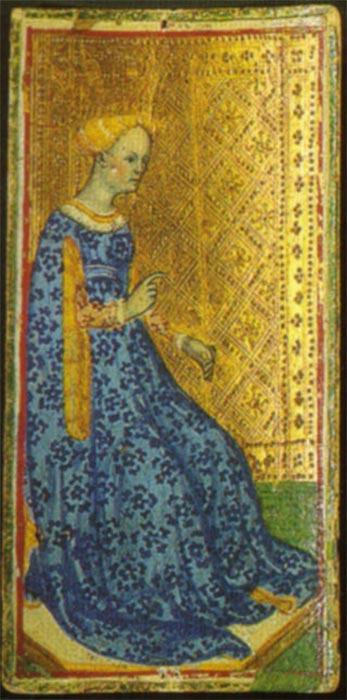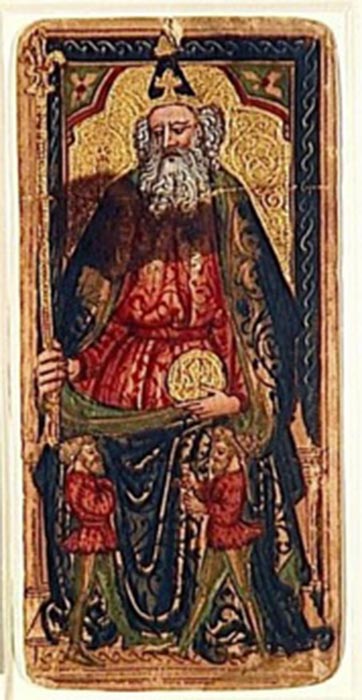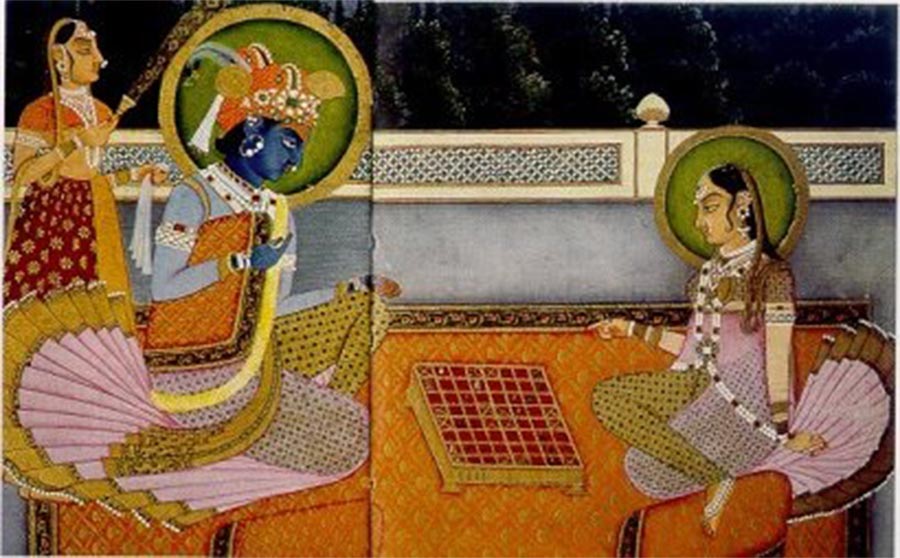
The Literary Panorama of the Tarot Cards: Historical Reality and Myths
Although the Tarot is the most widely used ‘book of images’ in the world for the purpose of fortune-telling, many people are oblivious to its origins. A popular belief exists that the Tarot originated in ancient Egypt, but in fact it originated in Italy in the Middle Ages. It has not yet been established with certainty, in which city, what was then called Ludus Triomphorum, or Gioco dei Trionfi, (Game of Triumph) saw the light. It was composed of two distinct groups of cards: the first consisting of allegorical images, the Trionfi, and the second group, called ‘a semi Italiani’ (Italian suits), encompassing Sticks, Swords, Cups, Coins.

The Queen of Staves from the Visconti-Sforza deck. Attributed to Bonifacio Bembo (15th century). (Public Domain)
Common Playing Cards
Reliable evidence indicates the common playing cards all date back to the second half of the 14th century. Since players easily indulged in blasphemous language against the saints, God and the Virgin Mary causing the indignation of preachers, authorities wished to curb gambling, with all its social and moral implications. This proves that the cards were already widespread in use in Europe by then. Among the prohibitions, are those issued in 1378 in Regensburg in Germany, and in 1388 and 1389 in Switzerland. The Tractatus de moribus et disciplina humanae conversationis (1377) of the Dominican Johannes de Rheinfelden, refers to the introduction of a ludus cartarum in Basel, specifying that he did not know when, where and by whom it had been invented, but he compared it to chess since both games had kings, queens, nobles and people.

The Emperor, the only surviving trump from the Rothschild-Bassano deck. He carries a florin while holding a sceptre surmounted by the fleur-de-lis, both symbols of Florence. (Public Domain)
The account book of the treasurer of King Charles VI of France in 1392 mentions the payment of 56 sols parisis to Jacquemin Gringonneur for producing three decks of gold cards for the king's amusement. In the Libro di Provvigioni Fiorentine (1376) one finds another interesting testimony, namely the taxation of the game of naibi, a term repeated in the chronicle of Giovanni Morelli, (1393), in which the author recommends the game of naibi. A similar term, naib, is found in the chronicle of Juzzo da Covelluzzo, (1480), referring to cards that had arrived in the city of Viterbo in 1379. Similar terms nahipi, naips are presented in other documents of southern Europe in the same period. It is interesting to note that naipes refer to the cards with the suits of Sticks, Cups, Swords and Coins in modern Spain.
Indian and Chinese Origins
According to some scholars, playing cards were first conceived in India, particularly Ganjfa, a card game that was widespread in virtually all courts in medieval India, and one of the favorite pastimes of nobles and kings. According to others, playing cards must be linked to an ancient chess game, Chaturanga, a forerunner of the current one. This was a game of military tactics, essentially intended for the warrior caste, but probably of priestly origin, which was first inherited by the Persians and later adopted by the Arabs.

Krishna and Radha playing chaturanga (Public Domain)




